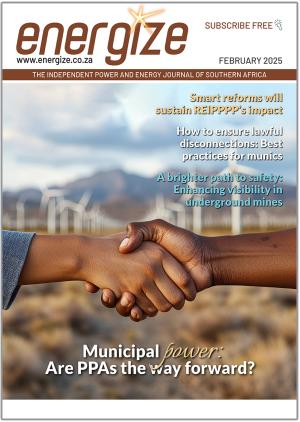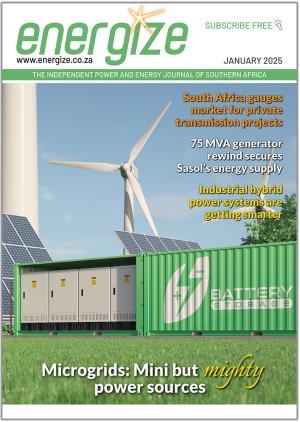Public hearings on Eskom’s sixth multi-year price determination revenue application (MYPD6) for 2026-2028 have concluded with the National Energy Regulator of South Africa (NERSA) hearing widespread rejection from stakeholders regarding Eskom’s proposed tariff increases. Eskom is seeking tariff hikes of 36,15% in 2025, 11,81% in 2026 and 9,10% in 2027 – a 66% increase over three years. The final round of public consultations, held in Durban last week, revealed significant dissatisfaction with the proposal.
“There has been widespread opposition – even outrage – at the application,” said Chris Yelland, Managing Director of EE Business Intelligence. “I’m not aware of any organisation putting their names down in support of this application.”
The Organisation Undoing Tax Abuse (OUTA) and City Power made detailed submissions opposing the proposed increases, citing concerns about Eskom’s financial management, cost control and focus on price hikes rather than operational efficiency.
“Despite massive revenue and price increases over the past 15 years, Eskom’s primary focus remains on ensuring cost reflectivity by increasing tariffs further with little attention to reducing costs or improving efficiency,” OUTA said. Yelland agreed: “Eskom seems to think that the only solution they can propose is to put up their prices. They don’t discuss how they can reduce their costs.”
City Power also raised concerns about Eskom’s rising primary energy costs, which are projected to increase by 38% from R92 billion in the current financial year to R128 billion in the next. The utility argued that Eskom has not provided sufficient justification for this “astronomical increase”.
Additionally, City Power criticised Eskom’s delays in implementing the independent power producer programme, suggesting that funding for this initiative should be tied to progress that can realistically occur within the tariff implementation window.
City Power recommended a tariff increase capped at 11% annually – far below Eskom’s proposal. “The recent implementation of a 12,75% tariff increase has already placed immense financial strain on our residents, pushing many to the brink of economic hardship. A further increase of this magnitude is unsustainable and morally unacceptable,” City Power said.
OUTA suggested Eskom should reduce its primary energy costs by reducing its overdependence on coal, replacing aging coal-fired power stations with cleaner and more cost-effective alternatives and addressing corruption in coal procurement.
OUTA also recommended Eskom focuses on its staffing costs. “OUTA recommends that NERSA commissions its own independent study to assess Eskom staff’s remuneration levels, hiring policies and the potential impact of downsizing.”
Eskom told Energize that it agrees only efficient costs should be recovered from customers. To achieve this, the utility has implemented various business initiatives to optimise its costs. “When applying for tariff increases, NERSA requires that prudency assessment criteria be applied. It is NERSA’s role as the regulator to evaluate the efficiency and prudency of Eskom’s financial and technical practices. In line with this, NERSA has conducted numerous audits to ensure Eskom’s compliance with regulatory and licensing requirements. Additionally, Eskom undergoes independent audits in accordance with International Financial Reporting Standards (IFRS) and compliance with the Public Finance Management Act (PFMA),” Eskom said.
According to Eskom, the average price increase is imperative in its efforts to migrate towards financial stability, be financially independent and reduce its reliance on government. “The current returns are not sufficient to allow Eskom to be financially sustainable,” Eskom said.
NERSA will review all submissions and make a final determination on Eskom’s revenue application. The decision is expected to be announced on December 20.















